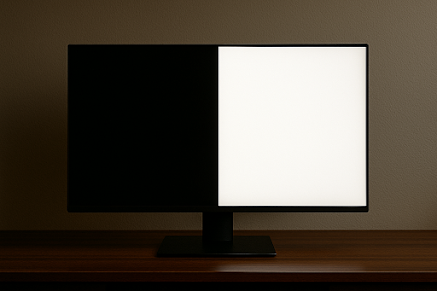Diagnosing Subpixel Anomalies with High-Contrast Fullscreen Tools
Subpixel anomalies, such as stuck or defective pixels, can compromise the quality of LCD and OLED displays, manifesting as faint color distortions or persistent dots. Identifying these issues requires high-contrast fullscreen tools to isolate and reveal irregularities. By utilizing whitescreen.vip, you can deploy vibrant, solid-color screens to diagnose subpixel problems with precision. This guide outlines how to use these tools effectively to ensure your display performs optimally.
What Are Subpixel Anomalies?
Subpixels are the tiny red, green, and blue components that form each pixel on a display. When one or more subpixels malfunction, they may display incorrect colors or remain stuck, creating noticeable defects. High-contrast fullscreen tools, like those provided by whitescreen.vip, use solid colors to highlight these anomalies, making them easier to spot than on complex images or interfaces. Early detection is key to addressing potential hardware issues or validating a new screen’s quality.
Why High-Contrast Tools Are Effective
High-contrast colors isolate subpixel performance by forcing each subpixel to activate independently. A defective subpixel will appear as an off-color dot against a solid background. For instance, a stuck green subpixel may show as a green dot on a red screen. Whitescreen.vip delivers consistent, vibrant colors tailored for this purpose, making it an ideal tool for both professionals and casual users. For those using screens in creative applications, Turn Any Screen Into a Makeshift Light Source for Product Photography explains how similar tools can enhance lighting setups for photography.
Next Steps After Diagnosis
Evaluate Warranty Options: Check your device’s warranty for policies on subpixel defects, as manufacturers often set thresholds for replacements.
Attempt Pixel Correction: Use flashing color videos or software to try reactivating stuck subpixels, though results vary.
Test New Screens: If you’re evaluating a new phone or monitor, use high-contrast tools to verify quality before committing. Learn more in Testing a New Phone Screen? Use This Blank Background First, which details screen testing best practices.
Tips for Accurate Diagnosis
Clean the Display: Wipe your screen to avoid mistaking dust for subpixel issues.
Test in Low Light: Dim ambient lighting to enhance contrast and make anomalies more visible.
Use Multiple Colors: Test with whitescreen.vip’s full range of colors to ensure comprehensive subpixel evaluation.
Conclusion
Diagnosing subpixel anomalies is straightforward with high-contrast fullscreen tools. By accessing whitescreen.vip, you can generate precise, solid-color displays to pinpoint defects and ensure your screen’s quality. Whether you’re troubleshooting a monitor or verifying a new device, this approach delivers reliable results. For more information or support, visit whitescreen.vip/contact-us/
review the whitescreen.vip/privacy-policy/ to understand how your data is handled.

.png)


Comments
Post a Comment